- Administrator
- Albums and Singles
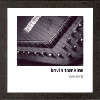 While the previously released (and reviewed) Perfectly Flawed disc demonstrated the variety of sounds that can be generated using only an Autoharp, here the Sutcliffe Jugend/Inertia (and former Bodychoke) member takes the approach to an almost Quixotic level: 17 full length discs using only the same instrument, recorded in a limited number of sessions. While some near 17 hours of autoharp music may sound daunting, Tomkins takes enough variation in his approach, both physically and conceptually, to deliver a vastly different array of sounds.
While the previously released (and reviewed) Perfectly Flawed disc demonstrated the variety of sounds that can be generated using only an Autoharp, here the Sutcliffe Jugend/Inertia (and former Bodychoke) member takes the approach to an almost Quixotic level: 17 full length discs using only the same instrument, recorded in a limited number of sessions. While some near 17 hours of autoharp music may sound daunting, Tomkins takes enough variation in his approach, both physically and conceptually, to deliver a vastly different array of sounds.
The story of this release (outlined in the accompanying booklet) is that Tomkins bought an old and ragged autoharp from a yard sale one day and began experimenting with it, without tuning or restringing the instrument. At the eve of a Sutcliffe Jugend show, his musical partner Paul Taylor had to pull out and, in an attempt to flesh out a live show alone, Tomkins discovered that layering loops of autoharp made for a good backing track. The early experiments of this appear in this set, along with a great deal of newer material.
Limited to 20 copies in the first edition, the 17 discs that make up this set are all individually sleeved and titled to roughly give an indication of what is contained within. Both Some Have Patterns and Slow Patterns, for example, are largely rhythmic loop-based recordings that build upon Spartan loops that become more and more complex as the tracks progress. Bow is more of a concrete title, consisting of all pieces in which Tomkins plays the autoharp with a violin bow, giving more of a sustained strings characteristic to the sound, hinging on slow drawn out notes and subtle building in layers and duration.
Other discs are not labeled as much for their structure as it is for the feeling and emotions that went in to creating them. Manic, for example, is some 66 minutes of frantic string plucks, crazed notes, and schizophrenic attempts at playing the instrument. While the sound remains relatively calm, the playing style is the equivalent of the manic fury most have come to expect from the artist, though here in a more stripped down context.
It would be remiss if Tomkins didn’t cater at least somewhat to the fans from the earlier Sutcliffe Jugend days, and though he has done quite a bit to show there is a lot more to his work than just brutality, he’s just like the rest of us and still likes to crank the noise once in awhile. Into Noise are slower developing tracks of low end drone that build and swell across each of the three tracks into sustained roars recalling Hermann Nitsch’s aktion based symphonies, and Noise begins by pegging the overdrive to the max, the volume up so loud to almost obscure the autoharp’s characteristic tones under thick roars. Rather than just staying with this approach, there are tracks of percussive and looped passages that give the rhythmic thump of classic death industrial, and other scraping and slicing tones that could be from the best of the slasher films.
For most of this set, the post-performance processing and multitracking was kept to a minimum, most of the material was recorded live using only effects and loop pedals. The final two discs of the set are the exception to this rule, as they are constructed from pieces and samples of the previous material. Rewoven (Light Weave) is the lighter of the two discs, cutting up fragments of notes into near traditional rhythms, resembling so-called "electronica" to some extent before ending with vast ambient space. The counterpoint Rewoven (Dark Weave) is the processed sounds from before built into dark ambient space: the opening pieces are slow funeral drone and quiet, dark and reflective tones. The closing segment is really a culmination of the near 16 hours that preceded it: a 40 minute piece of violent roar, restrained noise, and thick ambience.
Sure, it has to be said that at 17 discs, this is a somewhat excessive and indulgent set. However, each disc has enough variance in sound and style to let them stand on their own and not sound unnecessary or repetitive. Listening to them back to back or even in close succession is a bit too daunting of a task but spread out or treated individually, each disc represents a variation of the pathological study of a single instrument. It would probably be best for most to check out the single Perfectly Flawed disc first, but if that grabs others like it did me, this set should be sought out immediately afterwards.
samples:
Read More
- Administrator
- Albums and Singles
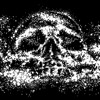 Mostly the solo project of guitarist Michael Bjella, this dark and violent (yet somehow atmospheric and ambient) album drunkenly stammers across genre lines in its three long tracks, combining drone, black metal, ambience, and raw noise that, while not necessarily novel in its approach, does wonderful things in its actual execution.
Mostly the solo project of guitarist Michael Bjella, this dark and violent (yet somehow atmospheric and ambient) album drunkenly stammers across genre lines in its three long tracks, combining drone, black metal, ambience, and raw noise that, while not necessarily novel in its approach, does wonderful things in its actual execution.
The opening "Night Zoe" begins with long passages of sustained high end feedback, much higher in frequency than other artists of this ilk stick to. The repeated high end feedback becomes slathered in tremolo to a warbling drone that, in a way, resembles the classic (at least to me) "The Red Sea" by Bodychoke, as it continues to meander on and on. Eventually it becomes accompanied by some lower register metallic riffs and while the sound remains constant throughout, the actual dynamics vary greatly.
The long centerpiece title track is a performance for KFJC and involves a drummer and keyboardist, fleshing out the sound even more. The opening loops of a distant, siren like squealing belies the rapid transition into more traditional metal territory. Deep slow riffs, skittering cymbal rolls, and raw feedback dominate the mix early on. However, as the guitar chugs on, a layer of slow, mournful melody rises up, contrasting the angry guitars with a more beautiful synthetic counterpoint. In some respects this balance resembles some of Jesu’s best work, though in a more noise ridden and improvised context rather than Broadrick’s more polished works.
The closing "Gasp in a Fifty Pound Claw" puts the more metal-esque elements in the backseat and instead focuses on the noise. The opening insect drone and high end blasts are matched with a bit of feedback and amplifier hum, which gives more of an ambient introduction to the rawer overdriven electronics and bashes of noise that emerge later on. In the latter moments the noise erodes away and what remains is vaguely reminiscent of a black metal band practicing in a garage down the street: the metal elements are there, but cut up and filtered to give an entirely different character.
"Mist from the Random More," the title track, is definitely the high point of the release as an album. The stark contrast between the harsher and melodic elements are extremely memorable. While the more drone-metal intro and noise outro don't quite stand well on their own, wrapped around the true meat of the record, they earn their keep.
samples:
Read More
- Administrator
- Albums and Singles
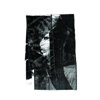 While unlikely to be as earth-shaking as the creative partnership of Brian Eno and the Talking Heads, the second union between these Brisbane indie rockers and electronic composer Lawrence English has nevertheless yielded some memorable and subtly warped pop gems. Fans of their excellent 2008 debut (even Brainwashed loved it) may miss the presence of departed vocalist/songwriter Meredith McHugh though.
While unlikely to be as earth-shaking as the creative partnership of Brian Eno and the Talking Heads, the second union between these Brisbane indie rockers and electronic composer Lawrence English has nevertheless yielded some memorable and subtly warped pop gems. Fans of their excellent 2008 debut (even Brainwashed loved it) may miss the presence of departed vocalist/songwriter Meredith McHugh though.
The Rational Academy's bio describes them as a "psychedelic avant-pop collective", which is somewhat misleading: Swans usually sounds much more like a cross between Elliot Smith and Sarah/Shinkansen Records bands like the Trembling Blue Stars than anything approximating Animal Collective. There is certainly some psychedelia present, of course, but it very subtle and usually reserved for the instrumentals (such as the hauntingly beautiful title track). The mood here is far more "wistful bedroom pop" than "mind-expanding."
Given the band's collective nature, it is difficult to determine each member's role, but it seems like Benjamin Thompson has become the band's creative center. This has resulted in a significant shift in the band's sound: the buoyant synthpop, male/female harmonies, and shambling Archers of Loaf-style noisiness displayed on A Heart Against Your Own seem to have largely departed with McHugh (whom I believe finished a doctorate and became a scientist). The one notable exception is "Hammer," which artfully melds bass-driven pop to a distressed synthesizer and an angular guitar jangle and tops it all off with spacey electronic weirdness. Instead, the Academy have taken on a more timeless and classic sound: if it weren't for the glistening electronic shimmer, songs like "A New Berlin" and "Summer Husbands" could've been recorded by the Zombies (although a bit more introspective and maybe a little twee).
Swans is a gorgeous sounding album, which probably has a lot to do with English. The acoustic guitars are crisp, the vocals are crystal clear, the songs feel spacious and open, and the electronics are subtle and often sublime. English is clearly a useful guy to have around, as nothing sounds bad when it is tastefully enveloped by an amniotic electronic haze. Aside from the aforementioned title track, I was also beguiled by the rippling spectral drone of "12 Feet in Cheltenham," which favorably calls to mind some of English's own lush soundscapes. There many less obvious examples as well though, such as the warm, undulating glow beneath the guitar solo in " New Berlin."
Notably, this release is the second in Someone Good's "10 songs in 20 minutes" series. While I certainly enjoy concise, well-written pop songs, that also means that there is only about ten or so minutes of truly good material included: there's some filler and an occasional misfire like the misplaced swagger of "Satan." Consequently, I am not sure if Swans is representative of the band's current direction or if this album is merely an experiment. It is undeniably enjoyable, but it doesn't quite hit the highs of their debut. Hopefully their next proper album will more fully realize that promise.
Samples:
Read More
- Administrator
- Albums and Singles
from the web site:
Surrounded By Hermits (Pieros 014CD)
New electro-acoustic piece divided into 16 sections crisscrossing echoes of varied genres. Starts with a section built on a bowed chinese gong, which is modified by a waw-waw pedal and moves into cluster chords of conch-shells and flugal horns. String ensembles augmented by 20 voices randomly reciting Shakespeare's Midsummer Night's Dream are featured along with a honky tonk piano that plays surreal dream motifs.
You get the idea. No? Have a listen than. Comes in an individually hand-made wood and hessian case with a small woodcut print.
Read More
- Administrator
- Albums and Singles
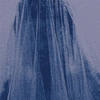 One of the goals of Buddhism is the obliteration of the intellectual construct of ego. For or better or worse, Greg Davis has musically achieved that with Mutually Arising: the entity that once was once Greg Davis is now merely a vessel through which minimalist drone passes. I, for one, will miss him.
One of the goals of Buddhism is the obliteration of the intellectual construct of ego. For or better or worse, Greg Davis has musically achieved that with Mutually Arising: the entity that once was once Greg Davis is now merely a vessel through which minimalist drone passes. I, for one, will miss him.
Davis’s drone-focused album from 2004, Somnia, marked a dramatic stylistic departure from his earlier work, but at the time I thought it was merely a fluke. I was mistaken: it appears as though Greg has finally abandoned both songcraft and his acoustic guitar altogether. Instead, the surprisingly non-organic Mutually Arising consists of two very long and very minimal drone pieces created using two vintage analog synthesizers processed through pedals and a computer (a Korg Mono/Poly and a Crumar Stratus, if you are interested in such things). While I am not hostile towards vintage or analog gear in general, I am decidedly not a fan of relying on analog synthesizers as the sole sound source for an entire album: the sustained perfect tones are so devoid of humanity and warmth that it is nearly impossible for me to connect at anything other than an intellectual level. That said, Mutually Arising is a pretty successful album on the aforementioned purely intellectual level and has already earned comparisons to folks like La Monte Young and Charlemagne Palestine. Many people that are not me will like this a lot.
The first piece, "Cosmic Mudra," fades in with a single low sustained tone and does not make much of a conspicuous departure from that over the course of its 28 minute running time: no rhythm, no melody, and no outside textural elements. Nevertheless, there is a great deal of subtle phase-shifting and microtonal activity occurring as it glacially snowballs in thickness and intensity. Around the 20-minute mark, some rather dissonant and quavering higher pitches begin creeping into the mix, resulting in a slow-motion crescendo of complex harmonies and uneasy oscillations. Gradually, all of the lower tones ebb into silence, leaving only a wake of twinkling trebly dissonance which itself slowly grows quieter and less jarring before finally disappearing entirely. I didn’t particularly enjoy “Mudra” all that much—a “mudra” is a symbolic or ritual gesture, incidentally—but Davis’s restraint and almost imperceptible improvisations were both admittedly worthy of respect.
Thankfully, the aptly-titled “Hall Of Pure Bliss” is a bit more conventionally compelling: while built around a single droning chord, it is enhanced by a psychedelic, phase-shifting shimmer that snakes and pans all around it. There is also an oddly soothing semi-rhythmic pulse that rumbles beneath it all. While Greg’s subtle manipulations do not vary wildly from those in “Cosmic Mudra,” the lush, undulating bed beneath his microtonal experimentation results in a far warmer and more enjoyable experience. Gradually, the warped shimmer fades out and leaves only a slowly waning and subtly oscillationing drone that glistens with quivering overtones; an inverse trajectory to "Mudra". The overall effect is very hypnotic and lulling. I could have easily drifted along for another 20 minutes or so if Davis had scrapped “Mudra” and doubled “Bliss,” but he didn't.
Mutually Arising is not a bad album by any means and I am probably being more negative than it deserves, but I sincerely wish that it was not a Greg Davis album. I understand that Davis is a serious electronic composer now and that he is deliberately stripping all traces of artifice from his work to achieve purity and simplicity, but the charm and fragile beauty that made his earlier albums like Curling Pond Woods so memorable are nowhere to be found. There are literally dozens of other people that could have made this album. I hate being the sort of alienated former fan that says things like “yeah, but his early stuff was way better,” but I have been left no other choice. Please start playing guitar again.
ssamples:
Read More
- Administrator
- Albums and Singles
 Kreng is Belgian sound sculptor Pepijn Caudron, who is best known for providing music for the oft perverse, ritualistic, and unsettling work of the Abattoir Fermé theater company. Appropriately, this debut compilation of those recordings is otherworldly, creepy, darkly humorous, and riddled with portentous silences.
Kreng is Belgian sound sculptor Pepijn Caudron, who is best known for providing music for the oft perverse, ritualistic, and unsettling work of the Abattoir Fermé theater company. Appropriately, this debut compilation of those recordings is otherworldly, creepy, darkly humorous, and riddled with portentous silences.
While L’Autopsie Phénoménale De Dieu could arguably be best classified as dark ambient, there are a couple of unusual aspects to Kreng’s work that render him unique. For one, Caudron’s work was originally based entirely on samples. While he seems to have softened somewhat in this aesthetic extreme (this album features both a pianist and a percussionist), borrowed material is still Kreng’s backbone. Secondly, Caudron’s work has earned some eclectic and unexpected comparisons to artists such as Morton Feldman, Harry Partch, Deathprod, and Moondog. This stems largely from his penchant for burgling from such highbrow sources as modern classical, first generation electronic artists, field recordings, and free jazz.
The opening piece, “Na De Sex,” begins with twinkling piano and a lone soprano, before segueing into a lurching reverie of discordant piano, shuffling jazz drums, abrupt electronic flourishes, and uncomfortably sharp violins. It closes with a campy movie snippet involving witches. I wish Caudron had used more film dialogue on the album (he has a knack for it), as its rare appearances make for many of the album’s highlights and flashes of humor. He is also quite adept at using female classical vocalists to haunting effect, but he is much more liberal with that. Incidentally, the noir-ish “Tinseltown” which follows, sounds like Erik Satie playing along with a field recordings of African percussionists while a disoriented trombonist and a deeply troubled violinist take turns wandering into the room. Eventually it all stops completely until a haunted-sounding blues or gospel vocalist laments “Oh Lord” to break the brief silence.
Some of the other more striking moments on the album are the nightmarish, yet propulsive “Kolossus,” and the menacing and vaguely tribal “The Black Balloon & The Armadillo,” which makes very effective use of rumbling low-end distortion. I was also quite fond of the disquieting “In De Berm (Part Three),” which uses samples of free jazz drumming to maintain an ebbing and flowing intensity while all kinds of strangeness swirls about. It ultimately concludes with a mournful soprano, a lonely church bell, and movie snippet proclaiming “we will dance…like nobody ever before.” The following “Nerveuze Man” sounds like a continuation of the same track and culminates in some uncomfortable chromatic strings (I’m somewhat puzzled by the seemingly arbitrary nature of the song breaks). The album’s centerpiece is probably the threatening and dense three-piece song suite “Scenes Met Mist,” but some of it verges on being bombastic. There are some other elements of heavy-handedness strewn throughout the album (such as prominent sounds of a woman weeping) too, but it is impossible to determine whether they are a result of clumsiness on Caudron’s part or merely a necessary component for the theatrical work. It is probably the latter, but they still hurt the album- I’d like to hear Kreng attempt a stand-alone work.
I don’t honestly know quite what to make of this album. Caudron is undeniably doing something rather unique here and has a lot of great ideas, but taken as an entire album, L’Autopsie drags a bit and ultimately sounds a bit one-dimensional. Also, soundtrack albums that are disembodied from the actual work they are soundtracking rarely hold up on their own. This was no exception: rather than becoming immersed in this album, I was seized with the nagging feeling that actually seeing a complete Abattoir Fermé production would have been an infinitely more rewarding experience. At the very least, it would certainly contain more rape, human sacrifice, and necrophilia. That said, I will definitely throw this on if I ever find myself in a situation where I need to brood or lurk menacingly in a ruined castle (or at a black mass).
(The CD version of L’Autopsie includes seven more tracks than the limited edition green vinyl version, but the vinyl version has much sexier artwork.)
Samples:
Read More
- Administrator
- Albums and Singles
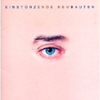 This was never one of my favorite EN records. It followed the near perfect Tabula Rasa and at its center was the dreadfully too-long "NNNAAAMMM," which kept it from getting regular front-to-back plays in my house. But now upon revisiting the album due to its reissue, I'm surprised at how many of my favorite EN songs come from this underappreciated gem.
This was never one of my favorite EN records. It followed the near perfect Tabula Rasa and at its center was the dreadfully too-long "NNNAAAMMM," which kept it from getting regular front-to-back plays in my house. But now upon revisiting the album due to its reissue, I'm surprised at how many of my favorite EN songs come from this underappreciated gem.
The record starts with a quick and boisterous anthem in "Was Ist Ist." Immediately, Blixa Bargeld's clever wordplay takes center stage as the album kicks into high gear around the chanted refrain that translates to "What is is, what is not is possible," it of course sounds much better in German! I think that casual observers of EN probably most often associate the band with metal percussion, angsty collage, or the musical automatons that make performances so interesting, but Bargeld's lyrical style is for me the main draw on albums like this one. With Ende Neu, the wordplay begins with the album's title which is formed by cropping the band's name down to words that are completely contained within it. "Was Ist Ist" drives forward with the harsh cadence of consonants repeating, with words twisting to state truths and corollaries, and with phrases like "Einst neue Bauten" that play further with the sound and meaning of words. This may be Neubauten's most clever work, and if it's occassionally more playful than powerful, it works more on the brain than in the guts.
From the opener, the album slows way down for the lovely duet ballad of "Stella Maris." This is EN at their most coy and romantic—a side of the band that poked through on Tabula Rasa and its companion singles, but that is more fully explored here and in later works. "Stella Maris" is so pretty that it's hard to swallow following the brash verbal assault of the album opener, and that may be why I don't associate the songs on this record very well. Songs like "Stella Maris," "Die Explosion im Festspielhaus," and "The Garden" work from simple, sparse melodies and bass arrangements, eschewing the mechanized fury found elsewhere on the record.
Though "NNNAAAMMM" is a perfect example of Bargeld's brilliant use of words as sounds and rhythms, its eleven-minute running time is an endurance test. The track builds quite simply from the repetition of the words "New No New Age Advanced Ambient Motor Music Machine" and over several peaks and valleys it collects counter rhythms and the stretched out vocalized acronym "NNNAAAMMM" to induce a sort of trance—when I can stay with it. "NNNAAAMMM" is the perfect track for a remix because of the brilliantly subversive idea to replicate machine rhythm with speech, but when I'm listening to the album straight through, the song can feel like a chore despite my appreciation for it. Fans who were hoping that EN would turn out something motorik and maybe even danceable may find "NNNAAAMMM" to be just what the doctor ordered but for that type of track, I prefer the shorter and more mechanical "Installation No 1," which almost sounds like EN doing Kraftwerk with Bargeld repeating the oxymoronic command: "Disobey. It's the Law."
"The Garden" finds Bargeld once again harnessing the power of repetition, this time in English as he is backed by a string arrangement and a melodic beeping that keeps time. It's a song that features beautiful orchestration that recalls the aching of "Armenia" from 1983's Zeichnungen Des Patienten O.T. as much as it anticipates the melodic phrasing of 1999's "Total Eclipse of the Sun." These are the Neubauten moments that I remember most fondly—the quieter and more refined moments where Bargeld's lyrics and the way that he utters them have time and space to sink deeply into the brain. These are the moments when EN is functioning like a subversive pop band with hooks and catchy lines that linger long after the clanking and crashing of their more violent work has faded.
In the end, I don't know that Ende Neu works for me as an album as much as it just provides some very good songs for the greater EN catalog. I love the cover and the title and the way that it cheats the listener into thinking that EN the "rock band" is back with its clamorous opening cut, but I find myself skipping over some of the songs to get to the ones that really resonate. With an entire remix album also available and an entire disc of Darkus remixes of "NNNAAAMMM," there's a lot to choose from.
samples
Read More
- Administrator
- Albums and Singles
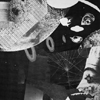 Former Black Dice member Eric Copeland has set out on his own off late, forging a highly unique sound that draws lines between pop, hip-hop, experimental and dance modes into an entrancing discourse on contemporary music culture. This, his second solo outing, further traces this at once nostalgic and futuristic musical approach ever deeper into the spaceways.
Former Black Dice member Eric Copeland has set out on his own off late, forging a highly unique sound that draws lines between pop, hip-hop, experimental and dance modes into an entrancing discourse on contemporary music culture. This, his second solo outing, further traces this at once nostalgic and futuristic musical approach ever deeper into the spaceways.
From the opening it is clear that this is not a sampling album of the usual order. Hardly as poppy as Animal Collective has become in recent outings, "King Tit's Womb" starts things with a pitch-bent vocal loop loping along atop a slowed down, street meandering beat before a bass line's funk restrains the work from being overwhelmed by the snaking fits and starts. More in line aesthetically with James Ferraro (of the Skaters) and his Lamborghini Crystal or Edward Flex projects, the piece has the same Ray Ban adorned dimentia of Ferraro's work, if a tad more giddy.
Yet the overwhelming nature of the pieces do retain this feel, pulling from seemingly any source that holds appeal in the name of a congested and highly immediate sound whose basis could only lie in the overloaded information age of today. The title track moves from short rap samplings, sprawled amongst a thick mass of bass garbble and flow, to trotting techno rhythms being manipulated to whatever sickening means are necessary.
Where many in this realm have a difficult time avoiding the trappings of a certain sound, Copeland's abilities extend themselves in his manner of treating each track as its own, forming worlds evocative of a highly varying number of moods.The celebratory chorus of pumping rhythms and crowded mumblings on "Osni" has a summer time trajectory that is highly contrasting to the go-nowhere pop malfunctioning of "Muchas Gracias." "Al Anon" is perhaps an even better of the pop album at the heart of this record, with nearly decipherable lyrics splayed over a bounding, spring-like rhythm with a chorus and everything.
At its heart the disc—actually a combination of two previously released EPs—is a party record, but one conscious of its role within that setting. Never a copyist and, conversely, a theft at heart, Copeland has fun with his material to such a degree that it becomes a distinct vision all his own, as twisted and convoluted as any contemporary head space. There's a poetry to the method it seems, but one buried far beneath the laughter accompanying it.
samples:
Read More
- Administrator
- Albums and Singles
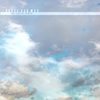 Brock Van Wey's Echospace debut is the first album to be released under his own name, but its content will not surprise anyone familiar with his previous ambient work as BVDub. It probably won't surprise anyone that this is a great album either: so much so, in fact, that Echospace head Stephen Hitchell was inspired to make an accompanying bonus album of his own reinterpretations. In this case it works, but I sure hope that does not become standard industry practice.
Brock Van Wey's Echospace debut is the first album to be released under his own name, but its content will not surprise anyone familiar with his previous ambient work as BVDub. It probably won't surprise anyone that this is a great album either: so much so, in fact, that Echospace head Stephen Hitchell was inspired to make an accompanying bonus album of his own reinterpretations. In this case it works, but I sure hope that does not become standard industry practice.
White Clouds Drift On and On was explicitly influenced by the works of Steve Roach, Gas, Brian Eno, Hans-Joachim Roedelius, Basic Channel, and classical minimalist composers like Steve Reich. Obviously, it is incredibly easy to humiliate yourself when you namecheck folks like Brian Eno, but such comparisons are not unreasonable here. For the most part, Van Wey avoids pastiche or explicit allusion and manages to forge a sound that is most assuredly his own. His success is mostly due to his impressive skill as a producer: lots of people make ambient albums based around warm synthesizer washes, but Van Wey creates uniquely vibrant, ever-shifting, and often surprising soundscapes by tweaking it all with hiss, lengthy decays, complex layering, and dynamic use of manipulated field recordings and elements like backwards acoustic guitars.
Among the influences cited, White Clouds Drift On and On seems most overtly reminiscent of Wolfgang Voigt’s Gas project, but with a distinctly cinematic bent: Van Wey seems to be quite fond of lush, billowing synth-strings (which dominate the opening “Too Little Too Late”). That particular piece is a bit too melodramatic and aggressively sad, but the subsequent tracks are all rather sublime. Especially “I Knew Happiness Once,” which endlessly repeats a warm, undulating synth loop and augments it with high-end sizzle, shimmering guitar, and very striking digitally altered vocals (probably from an African field recording). The fragile and floating melancholy of the song is mesmerizing, but it initially seems inhumanly cool and remote. Consequently, when the electronically distressed vocals slowly creep in, it sounds like my drugged, heavenly bliss cloud is being rended by very something very real and heartsick. “A Gentle Hand to Hold” also stands out, largely due to its subtly warped shoegazer guitar motif and warmly bittersweet synths. Essentially this is a great album from start to finish (with the arguable exception of “Too Little Too Late,” though I was intermittently charmed by its distant yowling vocals). Each individual song is a small gem of quivering, shifting heaven: listening to this album is like being inside a slow-motion volcano that spouts delightful soft things like feathers and kittens instead of rocks and magma, but also occasionally spews desolation and heartbreak. (I say that about every album though)
Hitchell’s re-envisions of Van Wey’s material (as Intrusion, amusingly) differ quite radically from the source album. Thankfully Hitchell’s…ahem… intrusion into the album is largely a welcome one, and rather ambitious as well: in general, Van Wey’s material is pushed extremely low in the mix, leaving only hisses, sizzles, or subterranean surges to subtlety allude to each track’s origins. Hitchell does maintain a very similar tone to the original album though, but the focus is shifted completely away from the source ambient washes and replaced with slow, deep percussion and warm dubby synth stabs. For the most part, the reinterpretation album is very nuanced, rhythmic, and immersive, but it also seems weirdly dated: the omnipresent minimal pulsing house beat and the heavily reverbed keyboards are conspicuously reminiscent of what was coming out on Mille Plateaux five years ago, like Twerk or Electric Birds (fortunately I happen like that stuff). Also, occasionally Hitchell missteps and gets a bit too slick and conventional: his languorous conga rhythm and gentle synth washes in “A Gentle Hand to Hold” would not be out of place in an upscale coffeehouse or a softcore porno with aspirations of sophistication. At least, upon first listen anyway (there’s quite a bit of cool understated studio wizardry happening, so the track is not a complete failure).
Despite some small flaws, Van Wey has crafted an instant ambient classic: White Clouds Drift On and On is completely engulfing and features enough subtle quirks to make keep it that way for many repeat listenings. This is oceanic in the best sense of the word, as what seems like placid beauty is roiling with activity upon closer inspection. Naturally, the Intrusion versions are not quite up to the same level, but those are unreasonably tall expectations to match: Hitchell’s tracks are packed full of buried studio flourishes that make for a memorable headphone album in its own right.
Samples:
Read More
- Administrator
- Albums and Singles
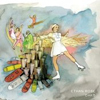 Ethan's third full-length takes inspiration from a roller rink and a Wurlitzer organ. Immersing himself in playing and repairing the pipe organ informs his updated sound manipulations with feeling for the older technology and balances melody with free-form flights. Oaks is alluring, impressionistic music that may prove to be a portal for those who have previously found such realms cold, shapeless and uninviting.
Ethan's third full-length takes inspiration from a roller rink and a Wurlitzer organ. Immersing himself in playing and repairing the pipe organ informs his updated sound manipulations with feeling for the older technology and balances melody with free-form flights. Oaks is alluring, impressionistic music that may prove to be a portal for those who have previously found such realms cold, shapeless and uninviting.
Much of the music on Oaks gives the illusion of simplicity. In fact Ethan Rose took around 18 months to fashion this album by recording and manipulating the sound of the 1926 Wurlitzer theater pipe organ in Oaks Park, Portland. The result is unobtrustive, calming, and has an immediately familiar feeling reminiscent of ambient tape loop experiments. This is not, though, a disc to put on and ignore while doing something else. From the first distinct notes, which cut through the silence and hang like crystal stalagtites, Rose's attention to detail is palpable. Not everyone will care about his methodology but he achieves an undeniable air of nostalgia and yearning.
The Oaks Park was built by the Oregon Water Power and Railway Company and opened on May 30, 1905. The park homepage describes it as often used as a business retreat and for weddings and holidays but being "rather uncrowded at other times." Suitably then, a pleasant loneliness pervades the entire record, especially on "Mighty Mighty" with high notes suggesting flickering sunlight, and distant low tones booming like the heartbeat of a sleeping giant. As the world becomes more crowded and peaceful isolation rarer it is no wonder that memories of the past take on a rosy hue. Fittingly, there is an aura of precious melancholy throughout Oaks, and "Scenes From When" is a very apt track title.
Oaks Park has amusements such as Looping Thunder (a rollercoaster), Rock-O-Plane (like a Ferris wheel but with enclosed seat) and Big Pink (a large slide that is now pink, yellow and blue). However, the best feature of the park is commonly accepted to be a wooden roller skating rink. Every Thursday and Saturday skaters are "serenaded" by the pipe organ—the largest in any skate park in the world. I doubt they will ever hear the organ produce anything more ethereal and transporting as Rose manages on Oaks.
The rink is close to the Willamette River it is traditionally prone to flooding. To counter this the rink floor was set on floating pontoons and, when a flood advisory is issued, the floor is separated from the rest of the building foundation. Two tracks refer to this threat and its solution. "Rising Waters" drips and crackles with faint sounds which vaguely resemble raindrops and lightning. "The Floor Released" has bubbling low and sparkling high notes which mutate into an intricate swell. The track also features a wheezing sound which accentuates the overall sense that Oaks is proceeding at the pace of steady, deep breathing.
Elements of repetition in the music are appropriate, given the circular paths taken by skaters going round a rink. Rose manages to balance a light atmosphere with an intimate intensity which, as aforementioned, comes from his attention to detail. As well as computer and electronics he benefits from the many pipes, instruments, and sound effects on the organ itself. These include gamba, vox humana, viol celeste, horn diapason, kinura, tibia, chrysoglott, chinese block, sleigh bells, tom, boat whistle, and telephone bells. The mood-defining opener, "On Wheels Rotating," is my favorite example of this and contains perhaps the broadest palate of sound; deep resonant tones and peaks of gorgeous spinning sound—like I imagine the lovely humming of a gyroscopic dervish ensemble.
To confuse matters a little, Ethan Rose's music is featured in Gus Van Sant's skateboarding film Paranoid Park, whereas Oaks Park has been featured in the films Untraceable (2008) and Breaking In (1987). I haven't seen any of those but I have seen Blade Runner, though, and am happy to report that—barring a couple of very briefly similar moments—Oaks avoids the heavy-handed saccharine sentimentality which now makes much of that soundtrack unlistenable.
Back in January, 2009, skaters at the Oaks Park roller rink were treated to Rose playing the whole album for a release party, along with a set by the resident organist, Keith Fortune. I am still returning to enjoy the disc six months later. With Oaks, Ethan Rose taps into the individual experience of considering or gazing at a beloved place or physical emotional landmark: willow tree, deserted ballroom, still pond, crumbling cliff, neglected castle, or even roller rink.
samples:
Read More
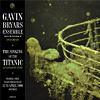 The Sinking of the Titanic is a piece of music that is a lot more than notes arranged in a certain order. It is the perfect marriage of conceptual art, music and raw emotion. In this reissue of a 1990 performance (originally on Les Disques du Crépuscule), the conceptual side of the piece comes to the fore as Gavin Bryars and his ensemble perform in a water tower and push the piece for the first time well beyond the constraints of previous performances.
The Sinking of the Titanic is a piece of music that is a lot more than notes arranged in a certain order. It is the perfect marriage of conceptual art, music and raw emotion. In this reissue of a 1990 performance (originally on Les Disques du Crépuscule), the conceptual side of the piece comes to the fore as Gavin Bryars and his ensemble perform in a water tower and push the piece for the first time well beyond the constraints of previous performances.


